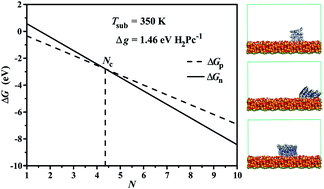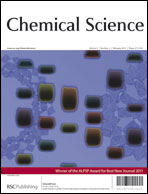The device performance of organic field-effect transistors depends strongly on the morphology and molecular orientation of the first few molecular layers near gate dielectrics, which are in turn governed by the initial growth stage. In this work, we establish a unified thermodynamic model to characterize the initial growth stage of disk-like and rod-like organic molecules during an organic vapor deposition process. Under a high substrate temperature and low deposition rate, the initially grown parallel cluster can transfer to the normal one at a critical molecular number Nc, which is determined by the competition between the surface energy of the molecule γf (surface energy of the molecular surface normal to the π–π interaction direction for a disk-like molecule or parallel to the molecular axis for a rod-like molecule) and that of the substrate γsub. By thermodynamic analyses and molecular dynamics simulations, we further confirm this transformation from disk-like phthalocyanine. When N < Nc, a parallel cluster is grown by self-assembly of individual lying down molecules driven by γf. At N ≥ Nc, together with γf > (5/7)γsub, the grown parallel cluster tilts down to form a normal one where Nc ≈ γfW/γlH (γl is the surface energy of the molecular surface parallel to the π–π interaction direction. W and H denote the molecular width and the intermolecular distance in the π–π interaction direction).

You have access to this article
 Please wait while we load your content...
Something went wrong. Try again?
Please wait while we load your content...
Something went wrong. Try again?


 Please wait while we load your content...
Please wait while we load your content...